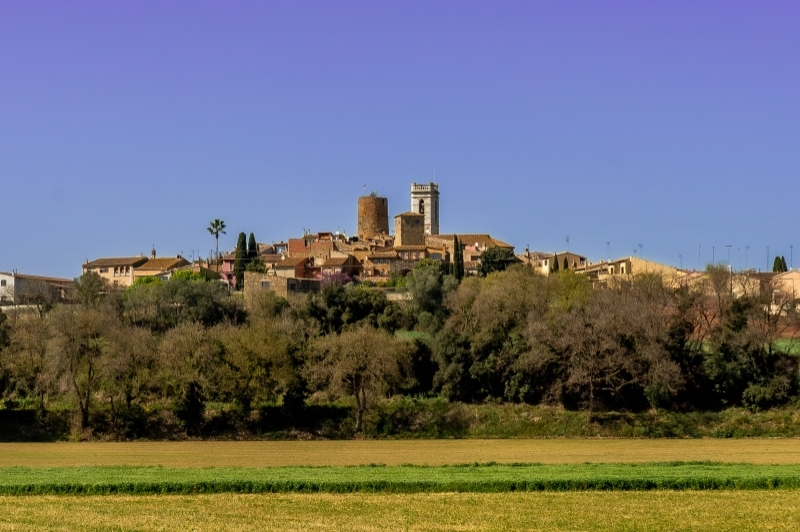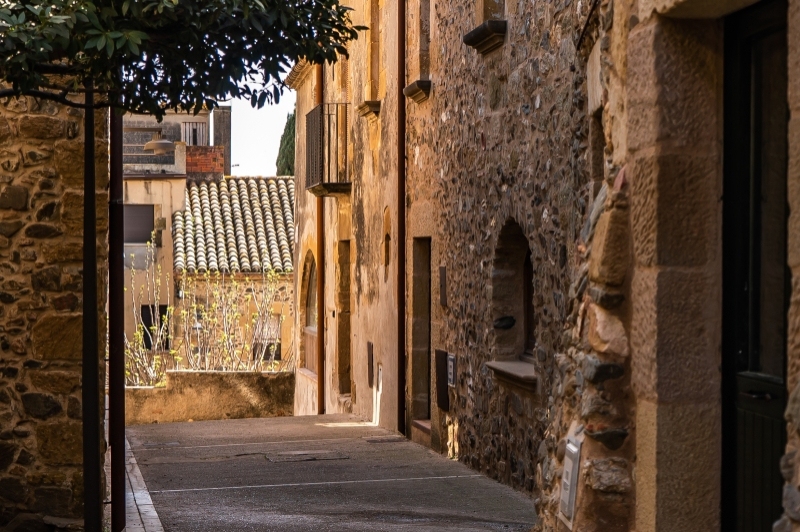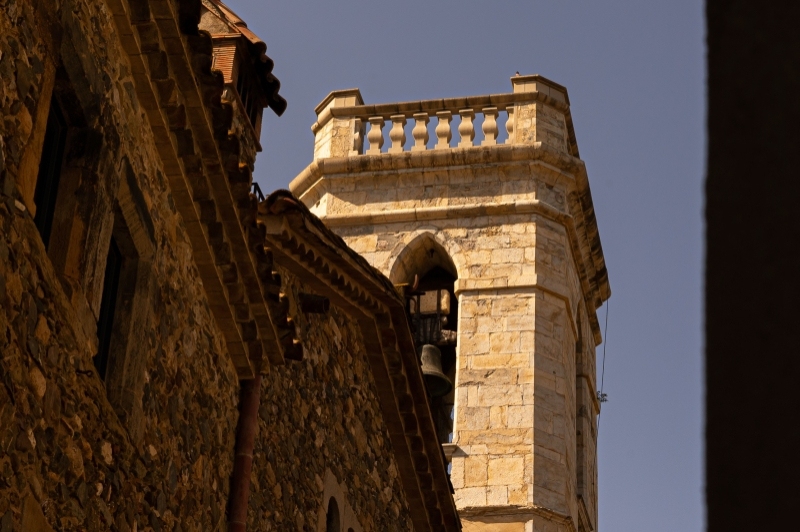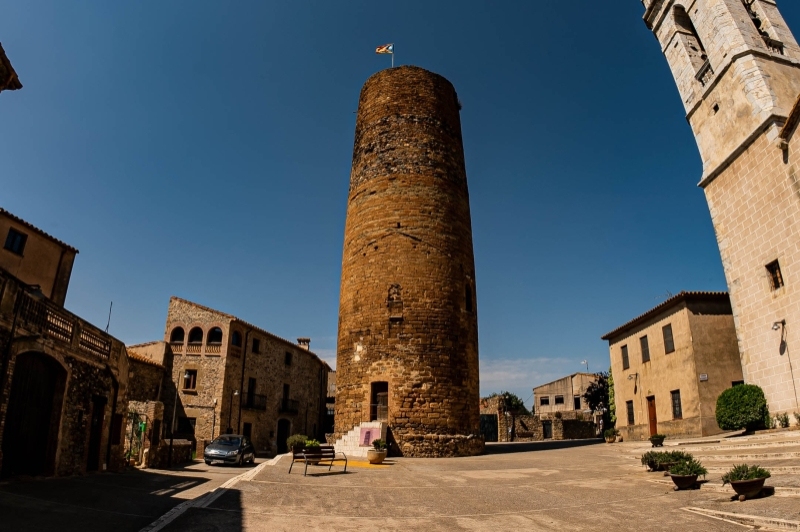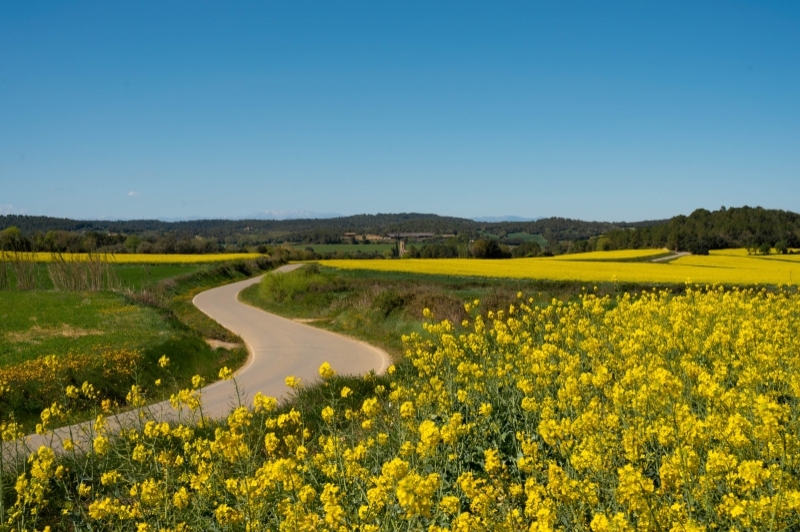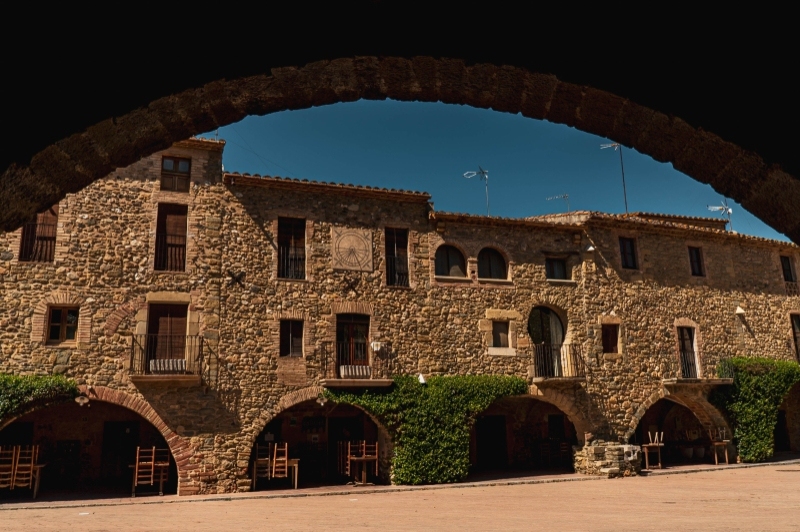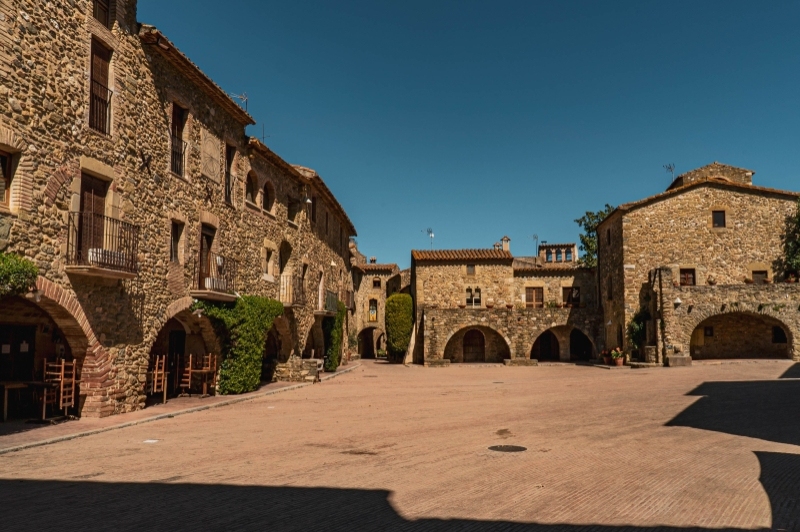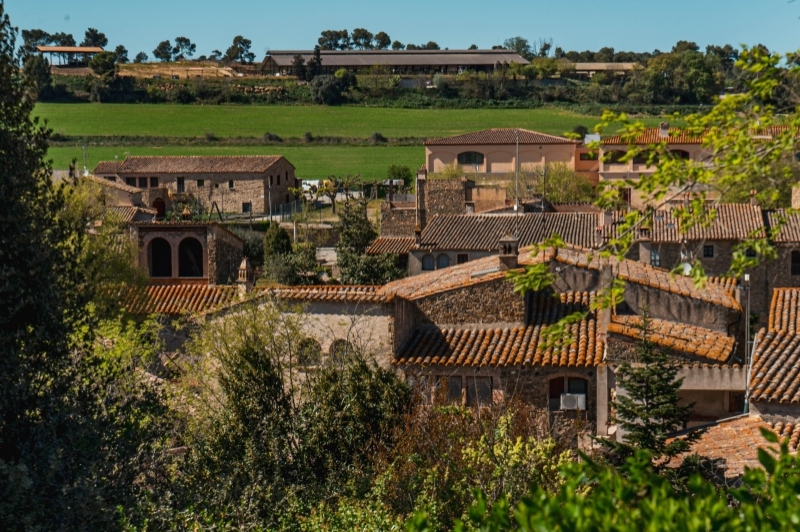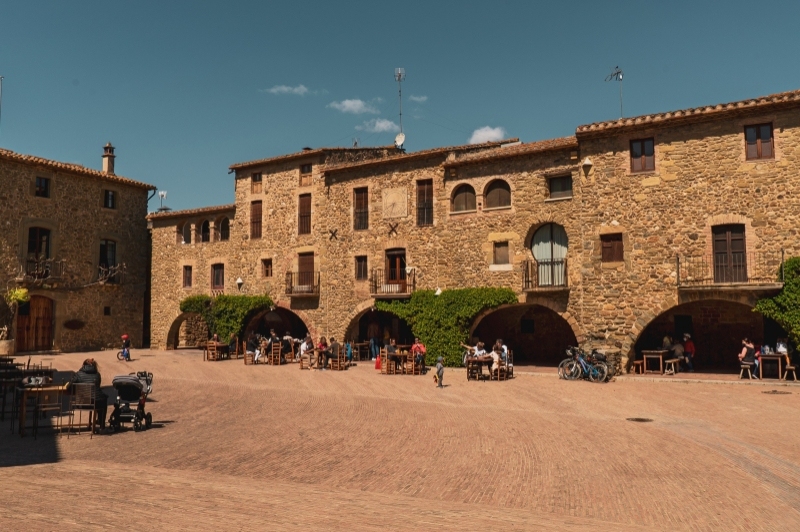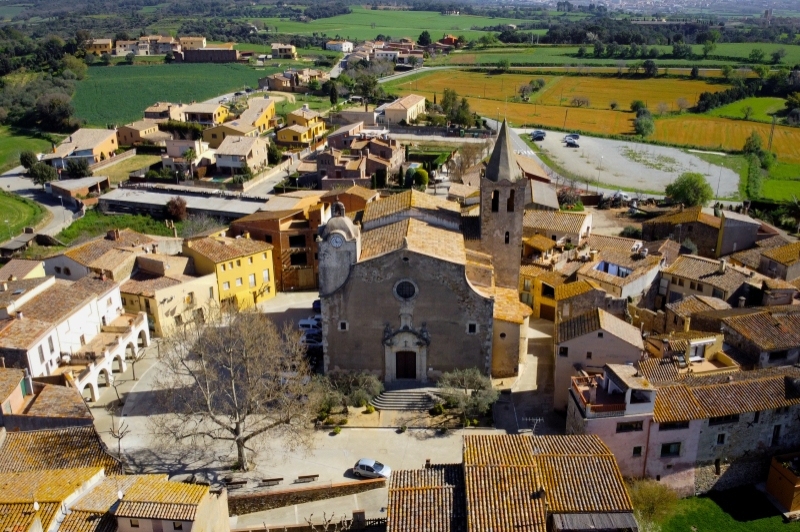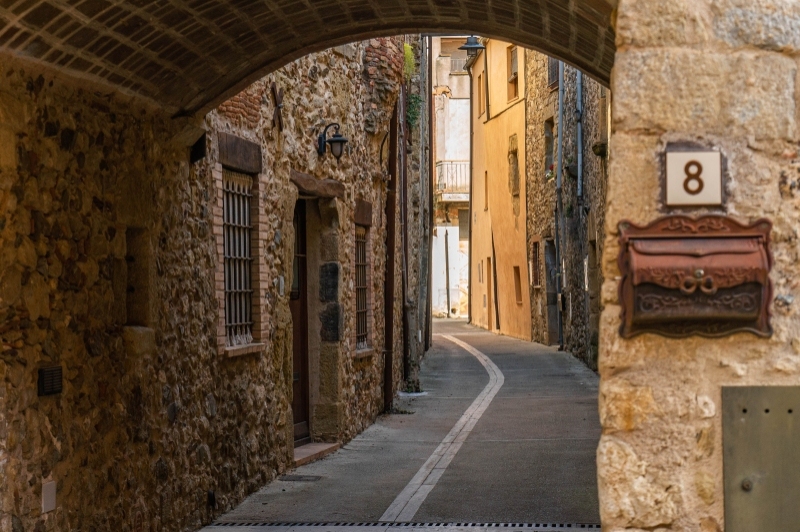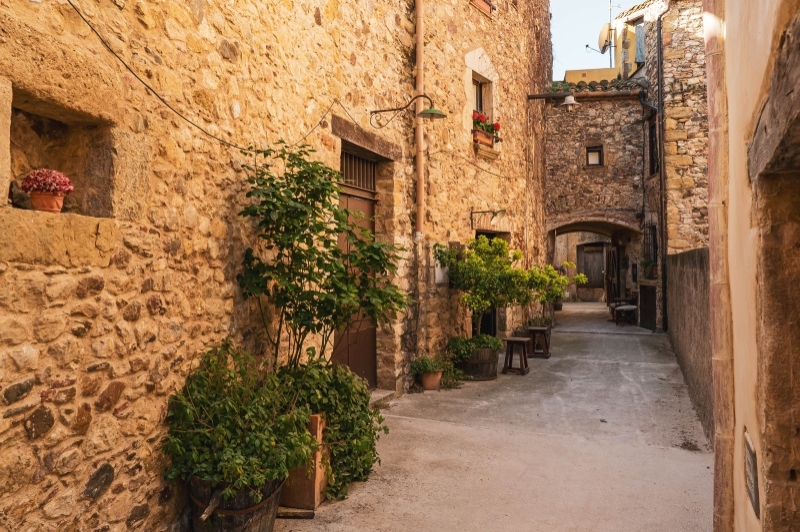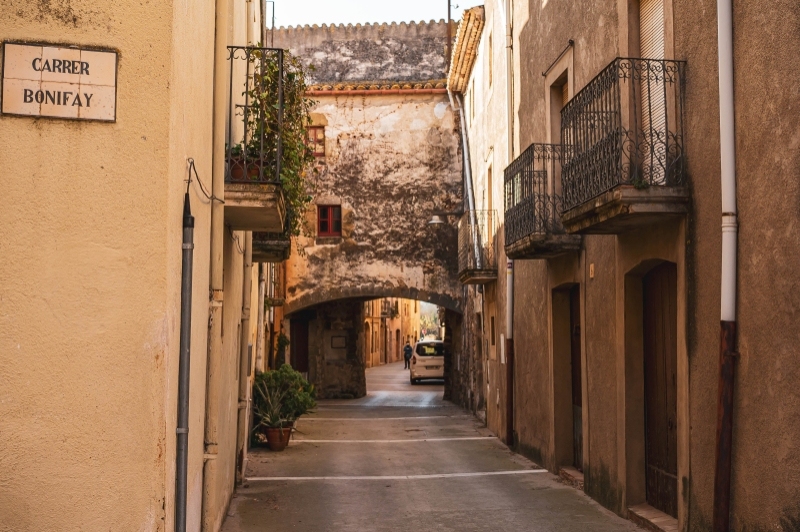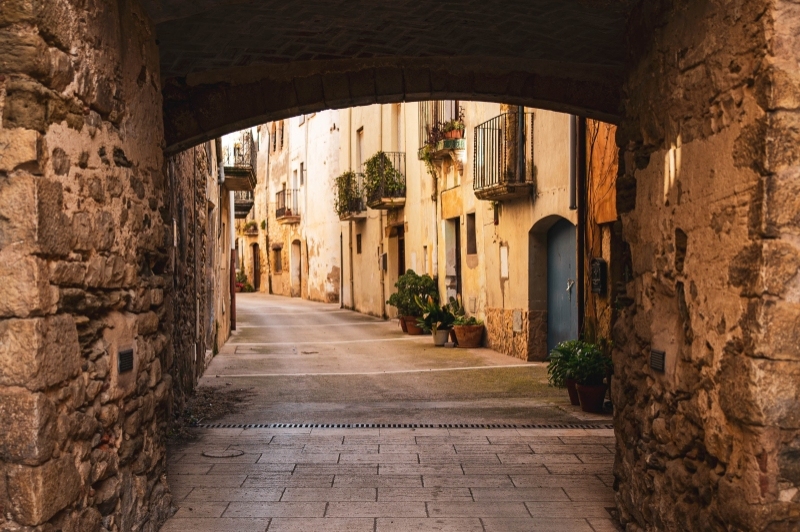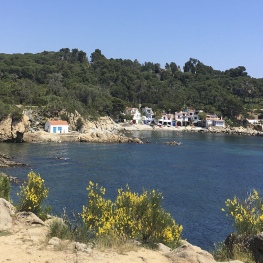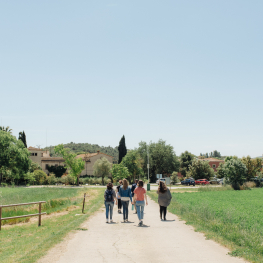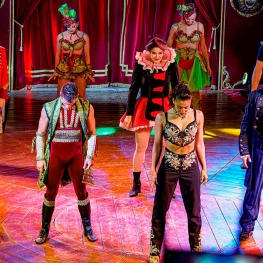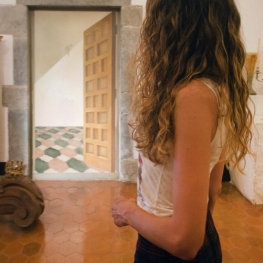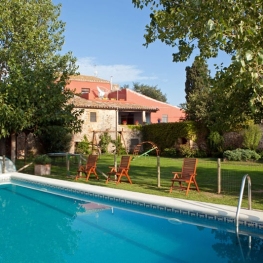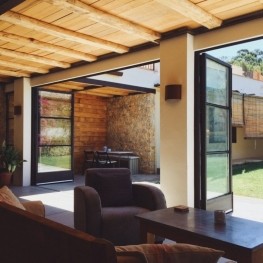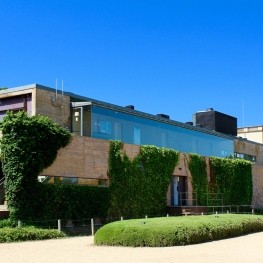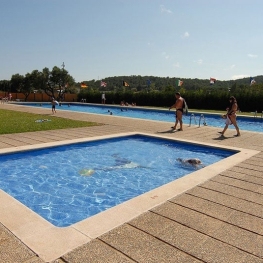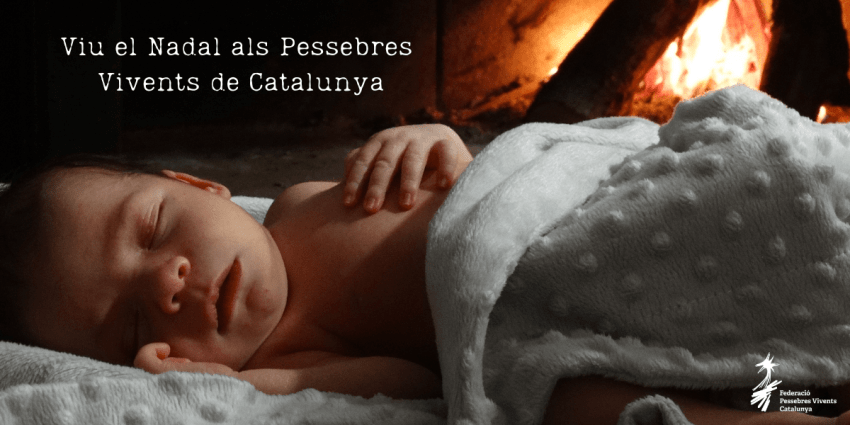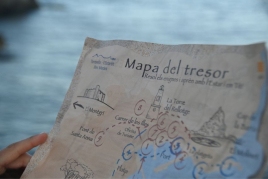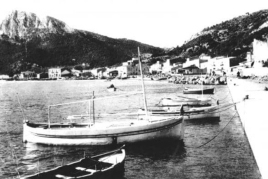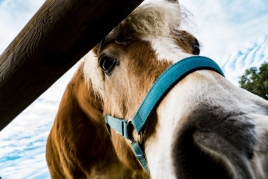Cruïlles, Monells i Sant Sadurní de l'Heura
Cruïlles, Monells and Sant Sadurní de l'Heura is a municipality in the Baix Empordà region, which was formed from the union of the nuclei of Cruïlles, Monells and Sant Sadurní de l'Heura in 1974.
As a curiosity, it must be said that this municipality has the longest name in Catalonia, with 43 characters.
Cruilles and Sant Miquel de Cruilles
Cruïlles is a small town with a strong medieval character that preserves part of its wall and the Keep of the old Castle, which has remained isolated in the middle of the square that bears the same name. From the top of the Tower, circular in shape and 26 meters high, you can easily follow the old walled enclosure of the town, which preserves many sections of the perimeter almost intact and some other square-shaped towers. Today an estelada flies to commemorate that in 1359 Berenguer de Cruïlles was named the first president of the Generalitat de Catalunya.
From the Tower you will have an exceptional view of the Monastery of San Miguel de Cruïlles with the Gavarres in the background and the Empordà plain to the sea.
Cruïlles, which already appears in documents from the 10th century, gives its name to a famous lineage that, related from the 13th century to the Peratallada, accumulated an extensive territory that reached as far as the sea. The memory of these ancient domains is the almost 100 square kilometers of extension that the municipality of Cruïlles, Monells and Sant Sadurní de l'Heura has, created in 1973 with the union of these towns.
The current population is the result of the union of seven old neighborhoods and historic centers: Santa Pellaia, San Cebrià dels Alls, San Cebrià de Lledó, San Miguel, Rabiosas, Salellas and Valloquera, and the neighborhood of Puigventós, which has grown next door. of the lands of Vacamorta. A good part of the territory is located in the natural area of Les Gavarres, currently protected as an Area of Natural Interest.
The church of Santa Eulàlia, patron saint of the town, along with Sant Ponç, stands in the same square. Although it was consecrated in the 11th century, there are currently no remains of the old Romanesque building; the current temple is from the 17th-18th centuries. The bell tower and the façade, which suffered serious pathologies and cracks, have recently been restored.
The Benedictine monastery of Sant Miquel de Cruïlles is a jewel of Catalan Romanesque. In recent years, several conservation and restoration processes have been carried out. Inside, you can see fantastic Romanesque paintings of lions and the betrayal of Judas, the large baptismal font made in one piece and other elements of interest such as Gothic ossuaries and tombs. You can also see where the Cruïlles beam was located, a polychrome Romanesque beam that is currently on display at the Girona Art Museum. The hermitage of the Virgen de Esperanza already existed in the 15th century and is still a meeting point for residents of the town and its surroundings, especially during the Aplec, which is celebrated at Easter. It can be accessed from the road that goes from Cruïlles to Monells.
The Puig d'Arques dolmen, located at the top of this peak and at an altitude of 525 metres, is one of the most important in Les Gavarres. It was first explained and excavated in 1964. The 1964 excavation yielded interesting funerary remains accompanying the corpses (hand-made ceramic fragments, with a greenish shale plaque, two arrowheads, and a flint knife). These archaeological materials, as well as its architectural typology – corridor tomb – allow us to place its construction at the beginning of the 3rd millennium BC. It consists of a long rectangular chamber, made of slate slabs, and a short, wide corridor formed by dry-stone walls, possibly lined with slabs, reaching up to the top step of the mound. The large left side slab, split into two pieces, is a natural outcrop worked into this shape. The orientation of this dolmen is atypical as it faces northeast instead of south. The total length of the monument - room and corridor - is 7 meters, with a width of 1.50 and a height of 2 meters. The burial mound, circular and 17 meters in diameter, was made up of large blocks and dry stone walls. The chamber and the mound were consolidated and their most damaged parts were restored.
Monels
Monells is a medieval town built around an old castle of which only the walls remain.
The set formed by its squares and streets exemplifies the evolution of popular architecture through different historical stages. From Romanesque times, parts of the walls and towers that surrounded the town and the castle have been preserved. In the Gothic style, the Plaza del Oli, Carrer dels Arcs and some large windows.
The place name of the town may have its origin in the mills that would take advantage of the water of the river that passed through the center of the town. It is precisely this stream, the Rissec, that currently divides the town into the neighborhoods of the castle and the stream.
In the direction of Madremanya, we also find the neighborhood of SÍes. During the 17th and 18th centuries, houses were built on the walls of the fortification, the interior spaces were rearranged and two lines of streets were formed, that of Vilanova to the east and that of La Riera on the left bank of the Rissec.
On the façade of many of these houses today we can see dates referring to these years.
Walking quietly through its streets contemplating the beauty of its houses until you reach the magnificent arcaded Jaume I square, the scene of a very important market that was held in medieval times, is one of the main attractions.
The charm and good restoration of this square and the streets of Monells have attracted the filming of all kinds of advertisements and a large part of the Spanish film "Ocho apellidos catalanes". The church of Sant Genís, patron saint of the town, is already documented at the beginning of the 11th century. It is located on the other side of the river, in the Riera neighborhood, in the direction of Madremanya. Like the old town, it has been growing and changing according to the needs of the population. And the temple that can now be admired preserves the Romanesque-style head, the Gothic-style nave and apse, and the Baroque-style western façade and bell tower. On the eastern outer wall, inside the cemetery, stands out a Gothic tombstone of the knight Arnau de Pontós, belonging to one of the most important families in the history of Monells.
San Sadurní of the Ivy
Located at the foot of the Gavarres, San Sadurní de Salzet or Saldet is the old name of the town, and it is already mentioned in documents from the 11th century. The neighborhoods of Estrabau, Rissec, Pedró, Salellas and Banyeres, and a part of the town of Sant Miquel de Cruïlles are also part of it. With the union of the towns of Cruïlles and Monells in 1973, it became its capital; It is in the Town Hall of Sant Sadurní where the plenary sessions of the consistory are held.
The historic center is structured from the square and the Calle Mayor. It is advisable to walk calmly around the temple and through the narrow streets that give access, listening to the chimes of the bells, and stopping the fresco in the shade of the plane tree in Plaça de la Font.
The Church of Sant Sadurní de l'Heura appears cited in the year 978. It consists of a nave with side chapels and a charred apse. The only glimpse of its Romanesque construction is the old bell tower, located in the midday band. The current church was built between the years 1773 and 1777.
In the area of the church we have samples of what was the Castle of Sant Sadurní de l'Heura. In 1052 it was the domain of the Bishop of Girona and held as a fief by the knight Amat Vives. Later it passed to the English family. The few remains that remain indicate that the fortress was located in the space where the square is currently located. The old bell tower of the parish church, Romanesque and with the presence of two loopholes, served as a cloque and defense function. In one of the houses in the NW sector of the square and on the south side are the Valls, a gallery covered with a vault about 13m long, where water is still stored.
The valleys are a construction that is located under the square itself, and they take us back to a time when good water storage systems were known, always so important not only for life, but also for the development of towns. It can be accessed from Portal street.
The Hermitage of San Juan de Salellas is one of the first Romanesque churches that has reached the best state of conservation to this day. It is located right under the monastery of Sant Miquel, within the properties of Mas de Can Salellas. It was restored at the end of the 20th century and every June a meeting is held to celebrate the feast of the saint.
On the outskirts of the town of Sant Sadurní de l'Heura, we find the menhir of the Right Stone. It is a prehistoric construction, surely with functions of signaling a grave or path. It is the only known menhir on the northern slope of Les Gavarres. In fact, dolmens and menhirs are constructions that they frequent where there are no natural caves, and their usual function is to serve as burial grounds. This menhir has given its name to the village school, which is currently part of the ZER Les Gavarres.
Finally, deep into the Gavarres massif, we find the Molí d'en Frigola. It is an old flour mill that is located at the foot of the Daró river. There is news from the 13th century, but the construction that can be seen today is from the 17th-18th centuries and has recently been restored. Very close, taking a pleasant walk, we can take the opportunity to visit the Puente de las Dobles and the lock.
Nearby routes
See all routes »- Route through the Romanesque of Empordà:… (a 3.9 km)
- The Medieval architecture of the Empordà (a 3.9 km)
- Route at the foot of the Gavarres in… (a 4.7 km)
- Route through the stone villages of… (a 4.7 km)
- The Dali Triangle (a 7.3 km)
What to do
Experiència #APROP - Llet Nostra
Cruïlles, Monells i Sant Sadurní de l'HeuraLive the #APROP experience and discover everything that is hidden behind a…
Circ Raluy
Palafrugell (a 14.8 Km)Discover the Raluy Circus and experience an unforgettable and enriching experience, culminating…
Castell Gala Dalí Visita Guiada
La Pera (a 6.4 Km)Enter a world of romanticism and surrealism and enjoy a unique cultural…
Where to eat
L'Espai Gastronomia
Tossa de Mar (a 27.1 Km)Enjoy a place where laughter, festivity, and gastronomy unfold around a large…
Where to sleep
Casa Rural Mas Masaller
Cruïlles, Monells i Sant Sadurní de l'HeuraIsolated farmhouse almost 3 kilometres from La Bisbal de Empordà. The farmhouse…
Hotel Molí del Mig
Torroella de Montgrí - L'Estartit (a 14.9 Km)We are an old mill of the 15th century restored by the…
Càmping Relax-Ge
Mont-Ras (a 14.3 Km)Camping located in Mont-ras, in the geographical center of the Costa Brava,…
Events
Experiences
Self-guided tour L'Estartit, a fishing village. A seafaring…
Torroella de Montgrí - L'Estartit (a 14.6 Km)

